#Metro Rail projects
Explore tagged Tumblr posts
Text
Mumbai metro rail
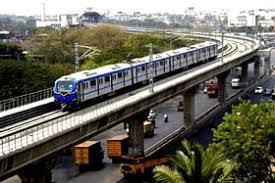
Tata Projects is playing a significant role in the development of Mumbai Metro rail projects, contributing to the city's robust public transport infrastructure. Their involvement includes constructing metro corridors, stations, and advanced systems to ensure efficient connectivity across Mumbai. With a focus on modern engineering, sustainable practices, and timely delivery, Tata Projects supports the vision of transforming urban mobility. The metro projects aim to enhance commuting convenience for millions of residents.
0 notes
Text
Dholera Project Plan: Metro Rail, ABCD Building, International Airport, Expressway, and Solar Park | R&B Infra

Welcome to the future of urban living With R&B Infra In Dholera. The development of Dholera Smart City is one of the most ambitious projects undertaken in Gujarat, India. As part of the larger Delhi-Mumbai Industrial Corridor (DMIC), Dholera is set to be a futuristic city with advanced infrastructure, smart technologies, and world-class facilities. R&B Infra is at the forefront of shaping this remarkable transformation, which promises to redefine urban living in India. The Dholera project plan includes several major developments, including the Metro Rail system, the iconic ABCD Building, an International Airport, a high-speed Expressway, and a Solar Park. Together, these projects will not only put Dholera on the map but also make it one of the most desirable destinations for investment and living in the coming years.
Dholera City: A Vision of Future
The Dholera Smart City Project is a state-of-the-art urban development designed with sustainability, efficiency, and technology in mind. Located in the Ahmedabad district, this city is being developed under the guidance of the Gujarat government and aims to create a world-class infrastructure hub. The city will include various industrial, residential, and commercial zones, making it a perfect blend of urban living and business opportunities.
Dholera is being designed with smart technology to ensure energy efficiency, waste management, and optimal usage of resources. The project will focus on providing a high quality of life for its residents while promoting growth in various sectors, including manufacturing, healthcare, and education. As the project progresses, Dholera will undoubtedly become a significant center for economic activity in Gujarat and the entire country.
Dholera Project Details: What’s in Store?
The Dholera project encompasses multiple developments that promise to elevate the city to new heights. Some of the major highlights of the Dholera Smart City Project include the following:
1. Metro Rail: Connecting Dholera to the Future
One of the most exciting components of the Dholera Smart City is the Metro Rail project. The planned metro network will connect key areas of Dholera, facilitating easy commuting and boosting the overall connectivity of the city. With a well-developed metro system, Dholera will witness reduced traffic congestion, increased mobility, and a cleaner environment. The metro rail is expected to be one of the key attractions for investors, as it will make traveling around the city efficient and hassle-free.
The Metro Rail system will also link Dholera with nearby cities, enhancing regional connectivity and making Dholera a central hub for business and tourism in the region. It is anticipated that the metro will contribute significantly to the growth of commercial and residential properties within Dholera.
2. ABCD Building: A Landmark of Dholera’s Future
The ABCD Building is one of the most iconic structures that will define the skyline of Dholera. This building is designed to house government offices, commercial spaces, and retail outlets, and it will become a symbol of Dholera’s rise as a smart city. The building will be an architectural marvel with modern design, offering state-of-the-art facilities for businesses and entrepreneurs.
The ABCD Building is expected to attract a wide range of industries, from information technology to finance, providing ample job opportunities for the residents. It will serve as the focal point for the city’s economic activity, providing infrastructure that fosters business growth and innovation.
3. International Airport: A Gateway to the World
Dholera’s International Airport will serve as a major gateway to global markets. As a crucial part of the Dholera project, the airport will not only improve connectivity but also bring global investment and tourism to the region. The airport will feature advanced terminals, cargo facilities, and world-class amenities to cater to both domestic and international passengers.
Dholera's International Airport will be strategically located to connect Dholera to major cities within India and across the world. It is expected to stimulate trade and tourism, and provide a seamless travel experience for both business and leisure travelers. The airport will also play a significant role in enhancing Dholera’s reputation as a global destination for investment.
4. Expressway: Fast Connectivity to Key Areas
Another major component of the Dholera project is the high-speed Expressway. This expressway will provide easy access to Dholera from neighboring cities such as Ahmedabad, Surat, and Vadodara, making it an attractive location for businesses and investors. The expressway will significantly reduce travel time, ensuring that Dholera remains well-connected to the economic centers of Gujarat.
The Expressway In Dhole will also support the transportation of goods, making it an essential infrastructure element for industries and businesses based in Dholera. By reducing travel times and boosting transportation efficiency, the expressway will further enhance the city’s prospects for growth.
5. Solar Park: A Sustainable Future for Dholera
Sustainability is a key focus of the Dholera Smart City Project, and the Solar Park will play an integral role in ensuring that the city’s energy needs are met through renewable sources. The Solar Park will generate clean, renewable energy for Dholera, reducing the city’s carbon footprint and making it one of the most environmentally-friendly urban developments in India.
The Solar Park will also contribute to India’s renewable energy targets and help Dholera become a model for sustainable urban living. It will attract businesses and industries focused on clean energy and innovation, contributing to the city’s long-term economic and environmental sustainability.
Dholera Smart City Plot Price: A Golden Investment Opportunity
The Dholera Smart City plot price is an attractive option for investors looking for high returns in the future. As Dholera continues to develop and its infrastructure improves, property prices are expected to rise significantly. Investors can take advantage of the current affordable prices of plots in Dholera, which are expected to appreciate in value as the city’s infrastructure projects, such as the Metro Rail, International Airport, and Expressway, come to fruition.
With its strategic location and world-class infrastructure, Dholera presents a golden investment opportunity. As the city becomes one of the most advanced urban centers in India, property investments in Dholera are expected to provide substantial returns in the coming years.
Dholera Project Plan: Future Prospects
As the Dholera project unfolds, it is expected to be one of the most transformative developments in India. The comprehensive infrastructure plan, which includes the Metro Rail, ABCD Building, International Airport, Expressway, and Solar Park, will position Dholera as a global city with cutting-edge amenities. The project is also set to drive economic growth, attract businesses and industries, and provide residents with a high quality of life.
For those looking to Invest in Dholera, now is the perfect time to get involved. With the Dholera project continuing to make progress, property prices are set to rise, making it an ideal location for long-term investment. Whether you are looking to buy a plot for residential or commercial purposes, Dholera offers unparalleled opportunities for growth and prosperity.
Are you ready to be part of the Dholera Smart City revolution? Invest in a plot today and secure your future in one of India’s most promising urban developments. Get in touch with R&B Infra for the latest updates on the Dholera project, plot prices, and investment opportunities. Don’t miss out on the chance to be a part of Dholera’s incredible growth story!
For more information: https://www.dholerainvestments.com/
E-mail ID: [email protected]
Call Us:+91 8780280999 Location: 412 - Shivalik Satyamev, Sardar Patel Ring Rd, Junction, Ambli - Bopal Road, Ahmedabad, Gujarat 380058
#Dholera city#Dholera project#Dholera smart city project#Dholera smart city plot price#Dholera project details#Metro Rail#ABCD Building#International Airport#Expressway#Solar Park
0 notes
Text
Demolitions for metro line to pick up pace in Old City post Ramzan
Demolition for road widening in Darul Shifa in the Old City is underway so as to make way for the Hyderabad Metro Rail in Hyderabad. | Photo Credit: SIDDHANT THAKUR The ongoing demolition of properties for the 7.5-km Old City Metro stretch from MGBS to Chandrayangutta as part of the road widening for the ‘Right of Way’ to build the metro line for the proposed Phase-II of the Hyderabad Metro Rail…
#demolitions for Hyderabad Metro#hyderabad metro#Metro rail project in Hyderrabad#MGBS to Chandrayangutta road widening
0 notes
Text
PM Modi to Virtually Open Pune Metro on Sunday
PM Narendra Modi will virtually inaugurate the Pune Metro on Sunday, enhancing urban mobility and offering a sustainable travel option for residents.
#Maha-Metro#Pune public transport#metro rail project#urban development#transportation in Pune#Pune Metro#Modi inauguration#Metro launch#Prime Minister Modi inaugurates Pune Metro
0 notes
Text
इस दिन से चालू होगी Patna Metro, सामने आ चुकी है रूट लाइन
Patna Metro Starting Date: पटना में मेट्रो (Patna Metro) का काम काफी तेजी से चल रहा है और लोगों को बहुत जल्द ही मेट्रो की सुविधा का लाभ मिलने वाला है. आपको बता दे की बिहार सरकार के नगर विकास एवं आवास विभाग के मंत्री नितिन नवीन ने इस बारे में चर्चा करते हुए यह बताया है कि लगातार पटना मेट्रो (Patna Metro) का जो प्रोजेक्ट है, उसकी समीक्षा हो रही है. फिलहाल ���र्स्ट फेज पर काफी तेजी से काम चल रहा है,…
0 notes
Text
youtube
0 notes
Text
Are American Cities in a bad state? Generally Yes.
Are they improving?
Also Yes!
It is so important to not lose hope for our cities and their futures. Because we need to improve our cities and make them more livable and the only way to do that is to fight for said improvements. And it is working. Houston Passed Proposition B yesterday allowing for proportional representation in their metro planning association. LA is massively expanding the metro with Measures R and M. California High-speed Rail is being built. New York is about to begin the largest subway expansion in over 50 years with the IBX and 2nd Avenue Subway. Chicago is about to extend the Red Line to the far south side. Seattle is building out the largest Metro project in the country with ST2 and ST3. The NEC just received over 16 billion in funds to repair and replace aging infrastructure. America is not beyond saving and there is so much momentum towards a better future that you can't allow yourself to give up at this critical moment
465 notes
·
View notes
Text
Thousands of CDC staff ordered back to the office, but transit hasn't expanded
by Darin Givens, Feb 18, 2025
The AJC reports that thousands of CDC staff who now telework are being ordered back to the office full-time at the Emory campus. Office space is reportedly scarce. But also, transit to the campus hasn't expanded as hoped:
What the status of MARTA's Clifton Corridor project? Let's review.
Clifton Corridor Transit Timeline
2012: MARTA sets light rail as the preferred alternative for Clifton transit expansion, serving Emory & more.
2016: More MARTA tax passes with Clifton Road rail listed as a potential project
2017 - 2022: MARTA rethinks rail, floating Bus Rapid Transit as a more affordable option.
2023: MARTA sets BRT as the new preferred alternative for Clifton transit.
2025: thousands of CDC staff ordered back to office at Emory; Clifton Corridor website hasn't been updated since 2023. MARTA says the project is in a technical planning phase.
MARTA's bus from Lindbergh to the CDC at Emory (the 6) runs every 20 minutes on weekdays at peak commute times for a 24 minute trip. That's not bad by MARTA bus standards, but it's also not the rapid transit many need.
MARTA maybe at least update that website?
EDIT: At a January City Council committee meeting, MARTA representative Carrie Rocha (Chief Capital Officer) implied that the Clifton project was on hold while they studied the potential for using Armour Yards as an endpoint. See...that would be some good info for MARTA to put on that Clifton Corridor web site.
21 notes
·
View notes
Text
Niranjan Hiranandani’s Vision for Panvel: Pioneering a New Era of Urban Living

Panvel is rapidly emerging as the next major hub for urban development, thanks to the Mumbai 3.0 expansion. As the gateway to Navi Mumbai, Panvel is benefiting from large-scale infrastructure projects, improved connectivity, and growing commercial opportunities. Recognizing its immense potential, Dr Niranjan Hiranandani has played a key role in transforming Panvel’s real estate landscape through Hiranandani Communities. With a focus on sustainability, integrated living, and modern infrastructure, Hiranandani Fortune City has redefined urban development in Panvel, creating a thriving township that blends convenience with quality of life.
Why Panvel? Understanding the Growth Potential
Panvel has become a preferred location for homebuyers, businesses, and investors due to its strategic connectivity and infrastructure expansion. Located near the Mumbai-Pune Expressway, Navi Mumbai International Airport, and JNPT, Panvel is set to become a high-growth corridor.
Several key infrastructure projects, such as the Mumbai Trans-Harbour Link (MTHL) and the Navi Mumbai Metro, are further enhancing Panvel real estate growth. The Panvel-Karjat Rail Corridor, RORO Services, and Coastal Road will ensure seamless connectivity, making the region attractive for professionals and businesses looking for a smart township in Panvel.
Hiranandani’s Master Plan for Panvel: A Smart & Sustainable Township
Dr. Niranjan Hiranandani envisions Panvel as a self-sufficient urban ecosystem. Hiranandani Fortune City, one of the largest Hiranandani Communities projects, is designed as a mixed-use development, integrating premium luxury apartments in Panvel, corporate parks, retail spaces, and entertainment hubs.
Sustainability is at the heart of the township, with eco-friendly architecture, green spaces, and energy-efficient infrastructure. By blending modern urban planning with environmental consciousness, Hiranandani Fortune City offers a model for future real estate developments in India.
Sustainable Living: A Core Element of Hiranandani Panvel
Hiranandani Panvel prioritizes eco-friendly living with initiatives like rainwater harvesting, sewage treatment plants, and renewable energy solutions. Smart design elements, such as tree-lined avenues, landscaped parks, and recreational zones, create a balanced and healthy environment for residents.
By incorporating green building materials and efficient water management systems, Hiranandani Fortune City aligns with global sustainability goals while offering residents a comfortable and environmentally responsible lifestyle.
Enhancing Connectivity: Making Panvel a Well-Connected Urban Hub
Seamless connectivity is a crucial aspect of Niranjan Hiranandani’s vision for Panvel. Upcoming infrastructure projects, such as the Navi Mumbai Metro, MTHL, and new highway expansions, will enhance accessibility to Mumbai and surrounding economic centers.
The expansion of railway stations and metro connectivity will significantly reduce travel time, making Hiranandani Fortune City an attractive location for professionals working in Mumbai, Navi Mumbai, and Pune. As urban development in Panvel accelerates, the township will be at the center of this transformation.
Luxury & Convenience: Redefining Urban Living in Panvel
Hiranandani Fortune City is designed to offer a premium lifestyle with top-tier amenities. Residents enjoy access to world-class clubhouses, modern fitness centers, swimming pools, and landscaped gardens. The township also features high-street retail, ensuring that daily conveniences are within reach.
Additionally, the presence of corporate workspaces and IT hubs makes Hiranandani Panvel a preferred choice for professionals seeking a well-balanced work-life experience. With residential, commercial, and recreational spaces integrated within the township, it exemplifies modern urban planning.
The Economic Impact: Panvel as a Thriving Business & Investment Destination
Under Dr. Niranjan Hiranandani’s leadership, Hiranandani Communities has played a pivotal role in shaping Panvel’s economic landscape. Special Economic Zones (SEZs) and IT parks are flourishing, creating thousands of employment opportunities.
Retail spaces within Hiranandani Fortune City are witnessing rising footfall, and commercial establishments are seeing increased demand. Investors are recognizing Hiranandani Panvel as a high-growth real estate destination, thanks to its long-term capital appreciation and rising rental demand.
What’s Next for Hiranandani’s Vision in Panvel?
Looking ahead, Hiranandani Communities plans to expand Hiranandani Fortune City further, integrating smart city solutions, AI-driven infrastructure, and digital connectivity. With continued investment in sustainable urban planning, the township will evolve to meet the demands of the next generation.
Dr. Niranjan Hiranandani envisions Panvel as a global urban destination, offering a balanced, future-ready lifestyle for residents and businesses. As more infrastructure projects are completed, Hiranandani Fortune City will continue to be at the forefront of Panvel real estate growth.
Conclusion: A New Era of Urban Excellence in Panvel
Dr. Niranjan Hiranandani has transformed Hiranandani Panvel into a benchmark for smart townships in Panvel. With a focus on sustainability, connectivity, and quality of life, Hiranandani Fortune City is not just a residential township but a self-sufficient urban ecosystem.
As Panvel real estate growth continues, Hiranandani Communities remains committed to building luxury apartments in Panvel that offer a world-class living experience. With its strategic location, strong infrastructure, and sustainable development model, Hiranandani Panvel is set to become one of the most sought-after real estate destinations in India.
FAQs
1. What is Niranjan Hiranandani’s vision for Panvel’s future?
Dr. Niranjan Hiranandani envisions Panvel as a smart, sustainable urban hub with world-class residential, commercial, and infrastructure developments.
2. How does Hiranandani Fortune City contribute to Panvel’s development?
Hiranandani Fortune City is a mixed-use township that integrates residential, commercial, and recreational spaces, promoting sustainable and integrated urban growth.
3. Why is Panvel becoming an investment hotspot?
With upcoming projects like the Mumbai Trans-Harbour Link, Navi Mumbai Metro, and new business parks, Panvel is experiencing rapid infrastructure development, making it an attractive investment location.
4. What sustainability initiatives are part of Niranjan Hiranandani’s projects?
Hiranandani Communities incorporates rainwater harvesting, energy-efficient designs, green spaces, and eco-friendly construction materials to promote sustainable urban living.
5. How will Panvel’s connectivity improve in the coming years?
Panvel will see improved connectivity with the Mumbai Metro, enhanced railway corridors, and expressway expansions, reducing travel time to key business districts.
9 notes
·
View notes
Text
Istanbul Mayor Ekrem Imamoglu made headlines in April after coasting to a second term in office by nearly 12 percentage points. Imamoglu, who has served at the city’s helm since 2019, is seen as a major political threat to Turkish President Recep Tayyip Erdogan and his Justice and Development Party (AKP). The latest win in Istanbul cemented Imamoglu’s continued popularity among the Turkish public.
But Imamoglu is only the most prominent face of a broader opposition, led by the Republican People’s Party (CHP). In March’s municipal elections, the CHP secured its most crushing victory over the AKP in decades. Possibly more notable than Imamoglu’s reelection was the newly elected class of women executives of provinces and districts across the country.
One of these women—Sinem Dedetas—may hold the keys to the future of Turkey’s opposition. Imamoglu is currently battling slander charges in the country’s high court, in addition to a slew of other cases that could eventually ban him from politics, even as he is the favorite to run for the CHP in Turkey’s 2028 presidential election. No matter how those fortunes play out, Dedetas promises to be central to the party’s strategy in a post-Erdogan Turkey.
Istanbul is the only city in the world to straddle two continents. Uskudar, a seaside constituency on the Anatolian side, lacks many of the bars and clubs across the water in the European districts. Instead, the conservative area is known for its historical mosques. It is also one of Istanbul’s key transportation hubs, home to a confluence of ferries, rail, metro, and bus lines. Millions of people from all over the city—and world—pass through Uskudar every day.
In April’s elections, Dedetas, a 43-year-old engineer, made history as the first woman to ever win the Uskudar municipality mayorship, a position similar to that of a New York borough president. She also flipped the district from the AKP to CHP rule.
Dedetas moved to Uskudar from her native Eskisehir, a city in northwest Turkey, for college in 1999. After receiving bachelor’s and master’s degrees in naval engineering from Istanbul Technical University, she got her first job in the district as an engineer. In 2014, she went on to work as a marine engineer at the Halic Shipyards, the oldest continuously operating dockyard in the world. Over the centuries, the facility has produced vessels from sail boats to steamships and submarines to electrical passenger taxis.
Dedetas’s career has featured many firsts. In 2014, she became the first chairwoman of the Turkish Chamber of Naval Engineers. While she was in that position, Istanbul’s AKP mayor tried to privatize the public harbor and turn it into a terminal full of restaurants and shops. Dedetas protested the project and was barred by the government from entering the shipyard.
She continued to oppose the new real estate development, concerned that the city’s ferries—an indelible part of Istanbul’s social history, skyline, and soundscape—would grind to a halt without the vital maintenance work done at the docks. “We fought to keep [it] from being lost,” Dedetas later said after her success in blocking the project.
Then Imamoglu became mayor of the city, bringing Istanbul back under CHP rule. “The privatization processes of the shipyard were being carried out,” Dedetas told Turkish media. “If [the mayorship] had not changed hands in the 2019 elections, there would be no shipyard left.”
One of the new mayor’s first orders of business was to appoint Dedetas as manager of Istanbul’s maritime public transportation system; she was the first woman in the role. Over the last quarter century, the city’s water transport fell into disarray as Istanbul’s population swelled and moved further inland, contributing to congestion and gridlock on road and rail. Yet municipal-run ferries predate the first Bosporus bridge and remain one of the city’s fastest options to cross continents.
Dedetas proved herself to be a masterful administrator, overhauling the entire water transit system. She opened 11 new ferry lines and launched a 24-hour weekend ferry that connected the European and Asian sides of the city. She also doubled the patronage of public water transport, in part by restoring the iconic white and orange vapur ferry ships. And she launched an electric sea taxi service, providing a personal, environmentally friendly option to traverse the Bosporus Strait and the Marmara Sea.
Through the effective management of maritime transportation, Dedetas gained national attention. She set her eyes on her home district, Uskudar—the Istanbul neighborhood with the longest Bosporus shoreline—ahead of the 2024 municipal elections. “Uskudar is the first gate for people who arrive from Anatolia, and for Istanbul, it is the gate to the rest of the country,” said Onur Cingil, an Uskudar native and CHP member.
The borough had been an AKP stronghold for as long as Cingil and most others could remember. It is even home to Erdogan’s private villa. Cingil said he saw local government officials claim eminent domain and exaggerate concerns about earthquake vulnerability to demolish buildings and hand over lucrative sites to construction companies, religious associations, and other party loyalists. “This happened … to my own student dormitory, and many other places,” Cingil said.
Cingil was one of the many CHP candidates vying to be the nominee for Uskudar’s mayorship in March’s elections, but the CHP leadership eventually selected Dedetas to run due to her reputation for being a technocratic consensus builder.
“Normally, I wouldn’t expect such a profile to be nominated for Uskudar,” said Burak Bilgehan Ozpek, a professor of political science at TOBB University of Economics and Technology. He described Dedetas’s young, professional, and secular profile as going against the grain in the district. The CHP typically nominated old-school, male party insiders for such roles, Ozpek said, adding with a laugh that they always lost the race. “This was a radical change,” he added.
Dedetas took a pro-people approach to her campaign against the AKP incumbent Hilmi Turkmen, who had been a mainstay in Uskudar’s politics for decades. She canvassed the district neighborhood by neighborhood, underlining her accomplishments governing the city’s maritime transit system, which has a budget the same size as Uskudar’s.
Dedetas vowed to redress the AKP’s neglect of women’s issues on both the district and federal levels. She promised to prioritize women’s employment and noted that, during her time helming Istanbul’s maritime transit system, she nearly tripled the number of women working there. She also proposed the creation of a free HPV vaccine program to protect against some forms of cervical cancer. (The cost of the vaccine has become nearly equivalent to Turkey’s monthly minimum wage.)
The candidate pledged to create child nurseries in every neighborhood in Uskudar. “This will enable women to work,” especially residents with low incomes, said Rumeysa Camdereli, an activist and member of Havle Women’s Association, the first Muslim feminist organization in Turkey.
Dedetas promised to expand welfare initiatives, and called for additional municipally subsidized cafeterias in Uskudar. Imamoglu created these during his first term for residents to get a healthy meal for just over a dollar, and his AKP competitor Murat Kurum mocked them on the campaign trail. “We are tired and bored of the rhetoric that tries to deceive the people by … giving half a tea glass of water or milk as if it is a service,” said Kurum. He also made fun of Imamoglu’s background as a kofte vendor.
Kurum’s gaffe turned off blue collar voters. Istanbul’s public eateries fill up every day for lunch and are vital in a country enduring a cost-of-living crisis amid annual inflation of nearly 70 percent.
“Local elections are less ideological and always more focused on services,” said Emine Ucak, the program director for social policy at the Reform Institute, an Istanbul-based policy center, who researches women in Turkish politics. “Women always think about their children, and they had stopped seeing a future for them.”
The campaign also focused on securing areas most vulnerable to earthquakes, a national concern after the devastating February 2023 earthquakes in Turkey’s southeast. Many locals fear that the slate block flats populating the hills above Uskudar’s wharf are in imminent danger in case of an earthquake. In response to their concerns, Dedetas is establishing a natural disaster directorate to help the district become prepared for earthquakes and other catastrophes.
On election night, Dedetas triumphed, beating Turkmen by more than seven percentage points. In doing so, she tore apart the long-held myth that Uskudar was an AKP stronghold.
“It’s a district with a lot of conservative families,” said Asli Aydintasbas, a visiting fellow at Brookings Institution. “For an uncovered woman to win is a real testament to her political appeal.” Unlike past CHP candidates, Dedetas shied away from the hardline, sometimes alienating secularism her party is known for. Pragmatism and empathy won the day.
Dedetas was not the only victorious woman on election day. Altogether, voters tripled the number of women mayors across Turkey. While only four female mayors had been elected in the previous municipal elections in 2019, 11 provinces and 64 municipalities are now governed by women, the vast majority of them representing opposition parties. Together, they won, on average, 53 percent of votes.
Female political representation is a welcome change after what many in the country see as backsliding on women’s rights under Erdogan. In 2021, Turkey exited the Istanbul Convention, an international treaty to combat gender-based violence that was drafted in the city a decade earlier. The Turkish president had urged women to have at least three children, claiming that those who reject motherhood are “deficient” and “incomplete.”
Although Turkey has a highly centralized political system, mayors remain key to managing districts and municipalities. They are where citizens first access the country’s welfare systems, and where businesses are registered, among other duties.
Following March’s elections, Dedetas and other mayors in the Turkish opposition now have their best chance in decades to govern with less interference from Ankara. She has wasted no time in initiating programs that address locals’ needs, such as grocery subsidies of up to $150 for retired residents. The district also plans to provide elderly residents free shuttle services to food markets. (Pensioners, who compose more than 10 percent of Turkey’s national population, receive roughly $293 per month from the state, an impossible wage to live on in Istanbul.)
Uskudar’s new mayor is also working to counteract the AKP’s neoliberal strategies, which many accuse of benefiting political patrons through shady backroom dealings all while poverty has deepened. To help promote transparency, Dedetas has begun to broadcast all municipal council meetings live online.
Figen Kucuksezer, an optometrist and Uskudar resident, is very excited by these changes. They’ve already helped preserve Uskudar’s Validebag Grove, one of the last wild green spaces in Istanbul. The area, which Kucuksezer volunteers to protect, is home to 400-year-old trees and migratory birds.
“The former mayor always wanted to make changes to the grove,” she said, referring to the AKP’s plans to develop the area by adding parking lots and food stalls and removing some native flora. But Kucuksezer and other local activists filed a lawsuit and have fought for years for Validebag to be left alone. “We had to block the Caterpillar [equipment] from entering in,” she said.
Since being elected, Dedetas has promised to protect it as a green space for all residents. In May, the local court annulled the previous government’s construction plan. “It is a breath of fresh air,” Kucuksezer added.
There is a saying in Turkish politics that whoever wins Istanbul will one day win Turkey. It was the case for Erdogan, who previously served as mayor of Istanbul before leading the country for the past two decades.
After years in the political wilderness, the CHP is now trying to repeat its success in the next national election, which should be the first without Erdogan in nearly 30 years. The challenge for Dedetas is to help Imamoglu triumph so that she can be his successor in Istanbul as he runs for the presidency.
So far, her stances have mirrored those of Imamoglu; Dedetas regularly highlights their work together on social media. But she has also bolstered her own profile by engaging in key culture war debates—including by opposing controversial legislation that will kill beloved stray dogs on the streets to rooting for the women’s national volleyball team at the Paris 2024 Olympics, a squad that has been vilified by the conservative right. Imamoglu’s and Dedetas’s fortunes are now intertwined.
“And this is just the start of her office,” said Cingil, Dedetas’s one-time party rival. “There are already rumors that she will be the next candidate for Istanbul mayor.” That would be another first.
16 notes
·
View notes
Text
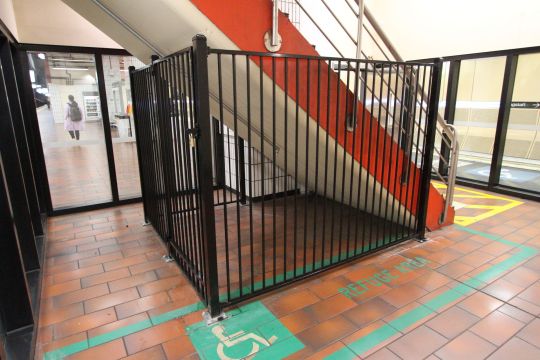
Wednesday 30 October 2024 - Fence installed beneath the stairs at Melbourne Central platform 3 and 4. Preventing access to a fire sprinkler vandalised by an 'amorous couple' on 10 October which resulted in the station being flooded. Plus 149 more new photos in the Melbourne Underground Rail Loop Upgrade Project, Melbourne suburban passenger information displays, Metro Tunnel works at CBD North, Yarra Trams - Melbourne CBD and Docklands, Kinetic Melbourne, Yarra Trams road fleet, Road coaches, Bayside Coaches, Melbourne Art Trams 2024, Metro Tunnel works at CBD South, Melbourne tram stops, V/Line at Southern Cross Station, Metro Trains Melbourne - Northern group, Signage at Melbourne stations, Melbourne rail replacement bus signage, Melbourne suburban bits and pieces, Melbourne signals and signalling equipment and Metro Trains Melbourne trackwork albums https://railgallery.wongm.com/page/archive/2024-10-30/
6 notes
·
View notes
Text
Florida is about to be hit by it's second Major Hurricane in two weeks. Milton is hitting Tampa two weeks after Helene did.
The difference between a "high end cat 4" and a cat 5 is just the classification detail. 155 mph winds as a cat 4 and 157 mph winds as a cat 5 will still destroy life and property.
Please call your congress people and urge them to go back to work and pass legislation to actually rebuild our country. Not just the areas hit by these hurricanes, but every place in America that needs it. Places like Flint and Jackson that still don't have clean water after years.
We need a sweeping infrastructure rebuilding plan to fix our crumbling water treatment plants, we need to bury our power lines, we need to strength our levies/dams, we need evacuation shelters for people in tornado/hurricane paths, just to name a few things. Not to mention completely rebuilding some of our interstates and bridges. (I personally would like to see high speed rail connecting most major metro areas, but first lets make sure everyone can survive!)
And we need to vote in more diverse voices to make sure that these projects don't negatively impact our most vulnerable communities AGAIN like they have in the past. (Say no to prison labor for these projects!)
Milton Facts:
For the non Americans (or just people who are interested):
Sustained wind speeds: 155mph = 249 km/h
Storm surge 12ft = 3.6 meters
Imagine evacuating 7 million people. Which is what they did for Irma (2017).
The region being evacuated is the size of Belgium.
You could fit Switzerland, Luxembourg, and the Netherlands inside Florida's borders at the same time. There are over 100 countries smaller than the state of Florida.
8 notes
·
View notes
Text
Dholera Project Plan: Vision, Development & Investment Opportunities | R&B Infra
Explore the comprehensive development plan of Dholera Smart City with R&B Infra. Learn about Dholera's visionary infrastructure, government-backed planning, and lucrative investment opportunities in one of India's fastest-emerging smart cities. Ideal for investors, developers, and future-focused businesses. Investment in Dholera is a core subject nowadays, so this is a perfect time to get positioned in this smart city and secure a piece of land to emerge as epitome of India's industrial evolution.
Visit: https://www.dholerainvestments.com/blog Location: 412 - Shivalik Satyamev, Sardar Patel Ring Rd, Junction, Ambli - Bopal Rd, Ahmedabad, Gujarat 380058
#Dholera city#Dholera project#Dholera smart city project#Dholera smart city plot price#Dholera project details#Metro Rail#ABCD Building#International Airport#Expressway#Solar Park
0 notes
Text
August 7 - Tainan - > Taipei (Final Day) - Tea House, Final Dinner
Today was our last day in Taiwan before departing for home. We met at 9:30 AM on the bus to make our way back to Taipei. Since we had already used our high-speed rail tickets after the Typhoon, we took the 5-hour bus ride back up the west coast of Taiwan. Halfway, we stopped at a rest area to get lunch. Jacob, Eli, Jack and I had MOS Burger (a Japanese burger chain restaurant), and I got the rice bun chicken sandwich, which was okay.
When we arrived in Taipei, we went to a tea house. The tea-making ceremony was interesting, as the servers had a meticulous process for serving the tea. The tea was bitter, and many people at my table didn't enjoy it much, but I didn't think it was too bad. I am not a tea drinker, so I have little experience with it. After the first batch made by the servers, we could brew the tea ourselves, so I enjoyed doing that a few times.
After the tea house, we went to our final farewell dinner. It was an excellent local restaurant that served Taiwan cuisine. It was lazy Susan style, so we got to try many different dishes. I enjoyed my last Xiao long bao, shumai, and several other classic cuisines. We also gave Peter, our tour guide, a few gifts at dinner. We all signed his Florida Gators tour guide flag, signed a card, and made a collage of photos from the trip for him. Peter was a fantastic tour guide and an integral part of the amazing experience I had here in Taiwan, so I was super glad we could get him something nice before we left. Also, we signed a card for and took a picture with our bus driver, Terry!
Once we checked back into our hotel, a small group went out to get an extra bag for some of the souvenirs we bought. We took the metro for the last time to Ximen, where we had our first tour in Taiwan. I got a small duffel bag for cheap and filled it with tons of Chinese and Taiwanese snacks from a PX mart to bring home. I can't wait to have my family and friends at home try some exciting things I got to try while here.
Final Reflection
I wasn't exactly sure what to expect when initially coming to Taiwan. Now that the trip is over, I am so glad I decided to go on this study abroad trip. I loved everything we did. The culture in Taiwan is fascinating, and its history is unlike any country I've been to. In Taiwan, you can experience the history of cultures from its previous occupancy of Japan, China, or even old European inhabitants. I specifically enjoyed going through temples and learning about Buddhism, Confucianism, and other celebrated religions, which are rarely seen in the U.S. One of my favorite experiences was touring the monastery in Kaohsiung and eating a silent lunch with the Buddhist monks.
One thing that was amazing about UF's Taiwan program is the freedom and free time that we get to do our exploration of Taiwan's culture and impact. I got to take time to explore my interests and then do independent research on that topic. My first project on Taiwanese technological innovation was one of my favorite days on the trip. I got to lock in on my specific interests related to my major and aspirations. I then wrote my second independent excursion to a baseball game I went to. Researching and writing about it taught me how important it is to Taiwan and its culture. The importance of baseball is something that I learned because of the independent assignment; otherwise, it would've gone unseen during my trip. Overall, I got so much out of having the freedom to do my own projects instead of being limited starkly to an itinerary.
One of my aspirations for the trip was to get more comfortable with my Chinese. I definitely did. I got to push my limits when ordering food, bartering, asking for directions, talking to locals, etc. One of the trip's highlights was talking to the taxi driver from the airport when I landed in Taiwan. Although I got more comfortable during this trip, I would like to be much more conversational next time I visit a Mandarin-speaking country. Unfortunately, after this trip, I no longer have room in my schedule to take more classes, and I have finished my minor in Chinese. However, this trip has inspired me to find ways to continue practicing and getting better. I won't give up on my Chinese studies despite no longer taking classes.
Overall, I recommend this trip to any UF student, whether you have taken Chinese or not. Plenty of students on this trip didn't know Chinese at all, and we all had a great time learning while also having lots of fun. I became friends with everyone on the trip. We all came from different circles and groups at UF but became close by the end. The itinerary was a perfect mix of structure, free time, education, and fun. Yeh Laoshi and our tour guide Peter were informative and made this trip one I will remember for the rest of my life.
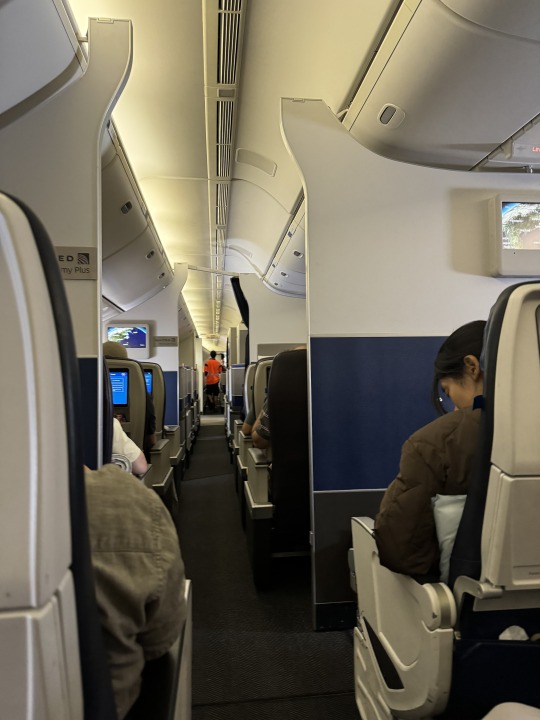

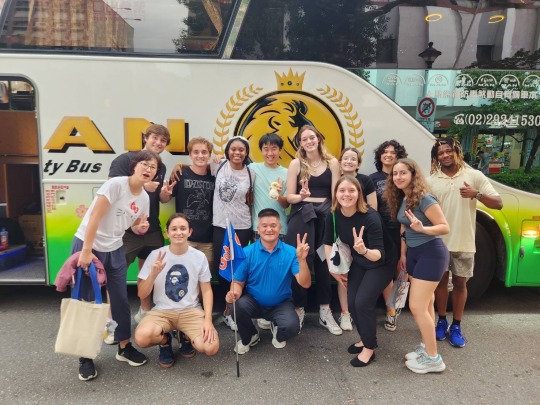
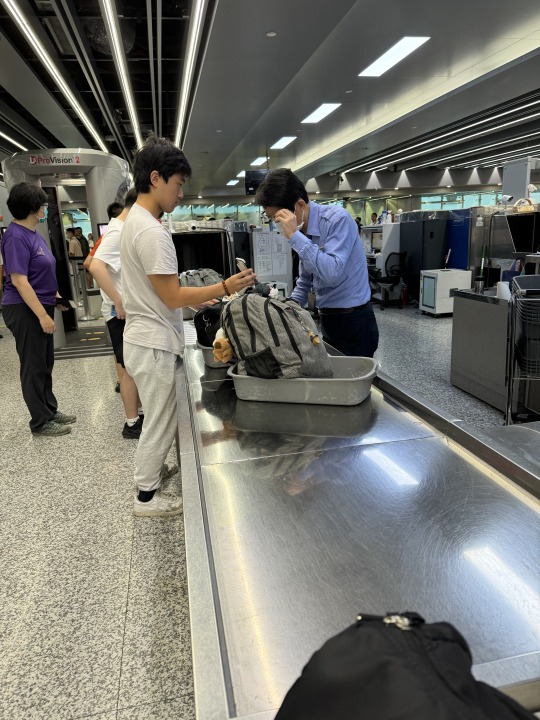
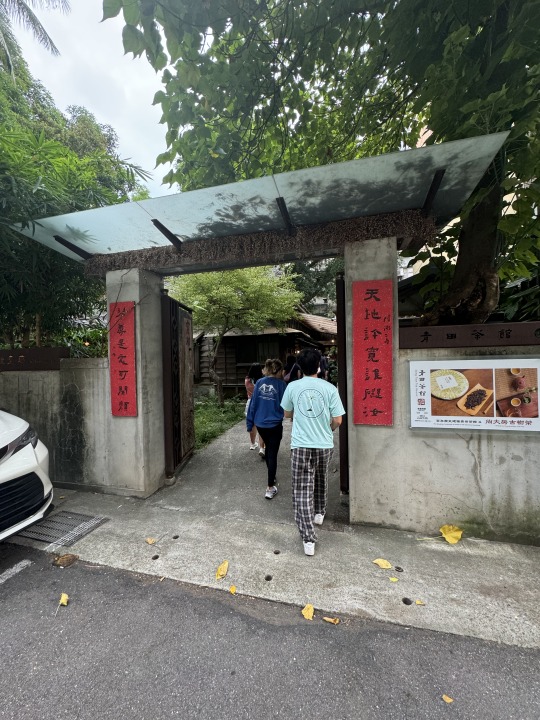


4 notes
·
View notes
Text
Rajasthan’s Ambitious IT City Plan Near Gurugram: A Vision by Col Rajyavardhan Rathore

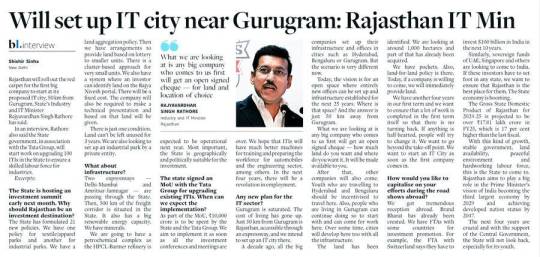
A Game-Changer for Rajasthan’s Tech Industry
Rajasthan’s planned IT city near Gurugram is not just a developmental project; it is a bold statement of intent. The initiative underscores the state’s ambition to position itself as a hub for innovation, technology, and entrepreneurship in northern India.
Why 50 km from Gurugram?
Strategic Location: Proximity to Gurugram, a major IT and corporate hub, ensures seamless connectivity and access to talent.
Enhanced Accessibility: With excellent road, rail, and proposed metro connectivity, the IT city will attract investments and workforce from across India.
Proximity to NCR: Being close to the National Capital Region (NCR) boosts the region’s appeal for both domestic and global investors.
Colonel Rajyavardhan Rathore: The Visionary Behind the Push
Colonel Rajyavardhan Rathore, known for his multifaceted leadership as a soldier, Olympic medalist, and parliamentarian, has been a vocal proponent of transforming Rajasthan into a modern economic hub. His unwavering commitment to Rajasthan’s development is reflected in his advocacy for this IT city.
Colonel Rathore’s Vision for the IT City
Creating Jobs: “The IT city will open up countless employment opportunities for the youth of Rajasthan and neighboring states,” he asserts.
Encouraging Startups: Col Rathore envisions the IT city as a launchpad for startups, enabling young entrepreneurs to innovate and thrive.
Building Smart Infrastructure: A focus on sustainable and world-class infrastructure will make the IT city a benchmark for others.
Key Features of the Proposed IT City
The IT city is being planned as a futuristic hub with state-of-the-art facilities to meet the demands of the modern tech world.
Smart Infrastructure
Green energy systems and sustainable architecture.
High-speed internet connectivity across the city.
Dedicated zones for IT parks, startups, and multinational corporations.
Education and Innovation Hubs
Establishment of training institutes and universities specializing in emerging technologies like AI, blockchain, and cybersecurity.
Research and innovation centers to foster collaboration between academia and industry.
Lifestyle and Living
Modern residential areas with smart homes.
Recreational spaces, shopping centers, and healthcare facilities.
Boosting Employment and Entrepreneurship
The IT city is expected to be a massive employment generator. Col Rathore emphasized, “This project will bridge the gap between talent and opportunity, not just for Rajasthan but for the entire NCR region.”
Job Creation
Direct employment in IT and tech industries.
Indirect jobs in construction, retail, and hospitality.
Support for Startups
Incubators and funding programs for young entrepreneurs.
Co-working spaces and mentorship from industry leaders.
The Economic Ripple Effect
The IT city is anticipated to spur growth in multiple sectors, including real estate, transportation, and services. Rajasthan’s economy is set to benefit significantly from this large-scale development.
Increased Investments
Domestic and international IT companies are likely to invest, given the favorable policies and location.
Urban Development
Surrounding areas will see rapid urbanization, improving overall living standards.
Challenges and the Road Ahead
While the project is promising, challenges like land acquisition, environmental sustainability, and seamless integration with Gurugram’s ecosystem need attention. Col Rathore, however, remains confident, stating that the government is committed to addressing these issues with innovative solutions.
Conclusion: A Leap Toward Progress
The establishment of an IT city 50 kilometers from Gurugram is a visionary move that aligns with India’s ambition to become a global tech leader. Under the stewardship of leaders like Colonel Rajyavardhan Rathore, Rajasthan is poised to redefine its identity, not just as a historical and cultural state but as a modern hub for innovation and technology.
This project isn’t just about building an IT city — it’s about laying the foundation for a brighter future for Rajasthan’s youth and economy.
2 notes
·
View notes
Text
youtube
0 notes